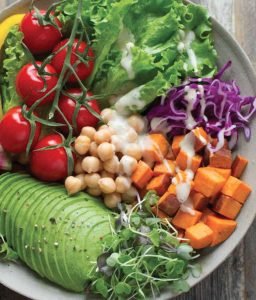
Navigating DIETS
- bey0ndM@gz!ne
- November 1, 2019
- Default, Health-Wellness
- 0 Comments
If I asked a random group of people today the kind of a diet they are on, their answers would be far from simple. A couple of decades ago when people spoke of diets most meant a “diet” aimed at losing weight. Today a “diet” is an entirely different ecosystem.
The reasons behind people following many of these diets vary. Some reasons are simpler than others. While some diets are better known such as the Vegan and Atkins, some not as much like the Fodmap and A.I.P. A few of these diets also have a bigger “fan” following and have gained more recognition due to famous personalities advocating them. Whereas, some are only prescribed by medical professionals. Which diet is more suitable for you depends entirely on the state of your health. It is no longer about simply losing excess weight for many.
Let’s briefly look at some of these diets:
Now when people are asked about which diet they are on, some of the answers you get are
- Vegan
- Gluten-free
- Paleo
- Ketogenic
- Fodmap

- AutoImmune Protocol(A.I.P.),
- Low Carb
- Atkins Diet
Vegan
Incredibly popular amongst the stars. The vegan diet consists of no animal products. It is a combination of a
vegetarian and dairy-free diet. Many who follow this diet do it not just for the health benefits it promises, but also because they support abstaining from the use of animal products. Foods allowed are nuts, legumes, seeds, and a wide variety of fruits, vegetables, and whole grains.
 Paleo
Paleo
The Paleo diet is made to resemble what our human ancestors ate thousands of years ago. It consists of eating “real” whole food. The simplest guideline for the paleo diet is – if it looks like its made in a factory, don’t eat it! It is another diet that has proved helpful in managing many diseases. Paleo-friendly foods include fish, eggs, meat, seeds, nuts, vegetables and fruits, and healthy fats and oils.
Low carb diet
It is simply just that! Limiting carbohydrates like bread, pasta, rice, legumes, potatoes, and other starchy vegetables, fruits, etc. Although beneficial for losing weight short term, eliminating so many food groups can lead to vitamin and mineral deficiencies, and developing other chronic issues.
The reason why all these diets are able to promise you better health is that they get you to eat real food, rather than food that is packaged and
made in a factory.
Atkins
The Atkins diet has been compared to the Ketogenic by many as it is also a low carb and high-fat diet. Atkins, unlike Keto, works in phases letting you increase the number of carbs you can consume gradually. It is another popular diet for people looking to lose weight. Foods to include are meats, fish, eggs, avocados, full-fat dairy products, nuts, seeds, and healthy oils.
 Gluten-free
Gluten-free
One of the biggest trends to hit the markets of late. Not only will you find more gluten-free products in your stores, but also many brands now clearly label existing products as being gluten-free if they are. Most of the people following a gluten-free diet do so because of certain medical conditions and not merely as a fad that many think that it is. There is enough research now that proves that going gluten-free is essential for those who have been diagnosed with celiac disease, gluten intolerance, wheat allergy and other autoimmune diseases such as Hashimoto’s, (autoimmune hypothyroid), graves (autoimmune hyperthyroid), rheumatoid arthritis, lupus, multiple sclerosis and psoriasis to name a few.
Surprisingly gluten doesn’t just exist in baked goods such as bread and cookies. It is also used as a binder in many salad dressings, cooking sauces and soy sauce.
Most of your common packaged snacks contain gluten as well. It is recommended to stick to fresh fruits, vegetables, organic meats and poultry, nuts, seeds, and healthy oils. A few of the gluten-free grains include rice, quinoa, amaranth, and millet.
 Ketogenic
Ketogenic
Currently a very popular diet and one that is at the center of many controversies, I might add. The Keto diet is a very low carb and high fat (good fats) diet, which in simpler words uses the fat in your body to convert into energy instead of using carbs. Proven very helpful in aiding weight loss, people on the Keto diet also experience higher energy levels while being on it. Though many health benefits have been proven for this diet, a lot of the new research shows that it is not recommended to be done long term. It is also a diet that is best done under the guidance of a nutritionist or holistic practitioner. Some of the healthy foods to eat on a ketogenic diet are seafood, cheese, avocados, meat, low-carb vegetables, low-carb fruits, and coconut oil.
 Fodmap
Fodmap
This diet isn’t one commonly known to most people. If you have been prescribed a Fodmap diet, it is probably because you have experienced digestive issues for a very long time. The Fodmap is a diet that is low in fermentable carbs. FODMAP stands for fermentable oligo-, di-, mono-saccharides and polyols, which is a scientific term used to classify a group of carbs that can cause digestive issues such as bloating, gas and pain in the stomach. Some common examples are milk, wheat, apples, garlic, and onions. It is a highly effective diet for most people with long term IBS (Irritable Bowel Syndrome). The list of foods allowed and ones to avoid on the Fodmap diet is available online. This diet is not meant to be long term, and foods are generally introduced back slowly.
Auto-Immune Protocol Diet
This diet is designed very specifically for people with autoimmune diseases. It is known as a stricter version of  the Paleo diet. It is relatively new and introduces a food-based approach to dealing with inflammation in the body caused by autoimmune conditions. It has shown tremendous success in terms of better health for people with autoimmune thyroid, celiac, eczema, psoriasis and other health conditions. Foods allowed are organic grass-fed meats, chicken, seafood, vegetables (no nightshades), limited fruits, coconut products, avocados, bone broth ghee, etc. Any foods causing inflammation are to be avoided such as nightshade vegetables, dairy, gluten, nuts, seeds, all grains, etc.
the Paleo diet. It is relatively new and introduces a food-based approach to dealing with inflammation in the body caused by autoimmune conditions. It has shown tremendous success in terms of better health for people with autoimmune thyroid, celiac, eczema, psoriasis and other health conditions. Foods allowed are organic grass-fed meats, chicken, seafood, vegetables (no nightshades), limited fruits, coconut products, avocados, bone broth ghee, etc. Any foods causing inflammation are to be avoided such as nightshade vegetables, dairy, gluten, nuts, seeds, all grains, etc.
After all, the definition of “diet “is “food and drink regularly provided and consumed “. So, see for yourself what it is that you are consuming regularly. There are some questions that are simple to answer.
From personal experience, I can tell you that for many people looking into specific diets, sometimes the answer isn’t one but a combination of diets. The reason some diets might work better for you while others don’t, depends entirely on your gut health and other health problems you are facing. I am currently on a combination of the Fodmap, Paleo and gluten-free diet for my health condition, and I have been on the A.I.P as well for my autoimmune thyroid and gut issues. Eventually, many of these diets need to be personalized. Especially for people with health issues, it is best to work under the guidance of a health practitioner or a nutritionist.
No matter which diet you are looking at, and for whatever reason, the eventual outcome most people are looking at is better health. For many,
that means losing excess weight, controlling blood sugar, cholesterol or improving digestive issues (to name a few). One thing you will find common in almost all these diets (and many others that haven’t been mentioned) is the attention to “real” food. The reason why all these diets are able to promise you better health is that they get you to eat real food, rather than food that is packaged and made in a factory. You will not find aerated drinks, chips, cookies or other “junk” food in any of these diets under the “allowed” list.
Good health is easy to implement if most people observe their eating habits. Many of these dietary changes are lifestyle changes and ones that can be maintained long term. I always advise my friends to carry fruit in their bags, so that they don’t reach out for a packet of anything when hungry. Taking lunch from home, and in general, eating more homecooked meals is another habit that isn’t difficult to implement. Create a balance between how many fruits and vegetables you eat as compared to meat products and grains.
For many looking at which diet to follow, eat fresh, eat real, and you will automatically be on the best diet for your body.





